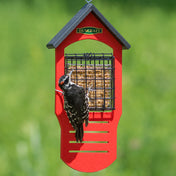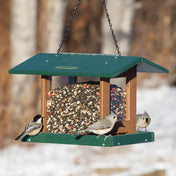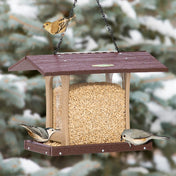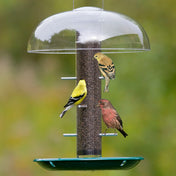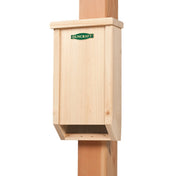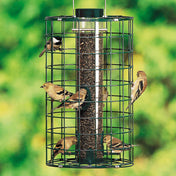As the leaves fall and the air turns crisp, it’s time for backyard bird lovers to prepare for a cozy season of winter bird feeding. With a little planning, you can make your yard a safe, welcoming haven for your feathered friends—and enjoy the view from the warmth of your home!
Here’s your quick checklist to get started.

Clean, Repair & Refill Your Bird Feeders
Before winter settles in, make sure your bird feeders are clean, sturdy, and easy to reach.
- Wash and rinse thoroughly to remove any old seed or mold.
- Position your feeders where you can enjoy them indoors and easily refill them in bad weather.
- Add a weather baffle to protect seed from snow and ice.
Pro Tip: Place feeders near shrubs or small trees to give birds shelter from the wind and a safe perch before they visit.

2. Keep a Hummingbird Feeder Out a Little Longer
Don’t pack up all your hummingbird feeders too soon! Some late migrants may pass through well after the majority have left.
- Offer nectar made with 1 part sugar to 3 parts water for extra energy.
- The higher sugar ratio helps keep nectar from freezing in cooler temps.
Even one extra feeder can make a difference for a tiny traveler on its long journey south.

3. Provide Fresh Water All Winter Long
Birds need water just as much as food in cold weather.
- Store unheated birdbaths for the season, and check cords on your heated bird baths for wear.
- Use a cord shield to protect electrical connections from snow and moisture.
- Not sure if your heater still works? Try this test: place it in a plastic bag in the freezer for a few hours, then plug it in—if it warms up, you’re ready for winter!
No outlet nearby? Place your birdbath in a sunny, sheltered spot to help slow freezing, or swap water mid-day when temperatures are warmest. Even a shallow dish refreshed daily can make a big difference for your backyard birds.
Explore our full line of heated bird baths and de-icers to keep your birds hydrated and happy.

4. Clean Out Bird Houses & Add Roosting Spots
Give your backyard birds a warm place to sleep.
- Empty old nesting material from bird houses and clean thoroughly.
- Add roosting boxes or roosting pockets to help birds stay warm overnight.
- Mount them in sheltered areas, 6–15 feet high, and use a baffle for extra protection from predators.
Even in winter, many birds use houses for shelter—so don’t pack them away!
5. Stay in Touch—We’re Here to Help!
Have questions about preparing your feeders, choosing the right heater, or keeping birds. Call us at 1-888-879-5095 (Mon–Fri, 9:00 AM–5:00 PM ET) or email info@duncraft.com
Happy Birding!
—The Duncraft Team, Birding Together Since 1952


